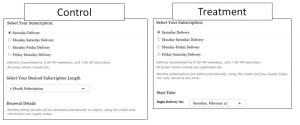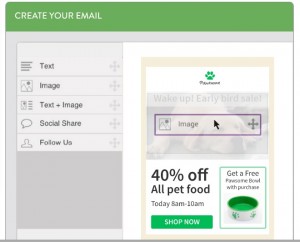I think that we can all agree that employee engagement is crucial to the success of a business. I recently saw a great diagram called the “Engagement-Profit Chain,” which outlines the business value of employee engagement. It looks something like this:
As you can see, employee engagement has a direct impact on a company’s bottom line. Although the “Engagement-Profit Chain” clearly shows the benefits that engaged employees have on the business, it does not show which factors lead to the success of it. Wee know from the leading edge research on this topic that employees need to feel challenged, motivated, valued, and well-connected at work. So, having a corporate culture that embodies a vision of continual improvement, strong communication, and recognition can help you get there faster. These topics are often talked about , but the one aspect that’s still foggy for many companies is the rewards and recognition element.
First, the bad news: disengaged employees can cost organizations over $ 300 billion per year in lost productivity. The good news? If you invest a little in a recognition and rewards program, it can go a long way. When companies spend 1% or more of payroll on recognition, 85% see a positive impact on engagement. To get it right, make sure that you are giving meaningful rewards and properly recognizing your employees for their time, efforts, and successes. After all, the more effective your recognition and rewards programs are, the more engaged your employees will become. So, what are the keys to success? Check out our tips to find out!
4 Tips For Providing Meaningful Rewards & Recognition
1. REWARDS DON’T HAVE TO BE MONETARY
Let’s be honest, we all love getting some extra cash or a gift card from time to time. In fact, gift cards are the most widely distributed employee incentives. But, it comes to a point where we have to question the meaning and value behind a gift card. With rewards, there is a major opportunity to provide employees with something individualized and meaningful. Research done by Aberdeen found that only 14% of organizations provide managers with the necessary tools for rewards and recognition. Even with limited resources and money, there is still room to get creative- Is there something else that is related and unique to your company culture? Is there a type of reward that would increase workplace socialization- such as team lunch or birthday celebration? These are things to think about… and easy to find out- just ask your employees!
Give this a try: Offer flexible hours. This will give employees some leeway in scheduling appointments, spending time with the kids, or more opportunities to avoid rush hour traffic. Letting your employees have a say in their work schedules can help to build trust and strong work relationships. The best part? It’s a cost free reward.
2. RECOGNIZE MORE THAN JUST RESULTS
Effort is important, too. Employees often spend large amounts of time and effort on tasks or projects that aren’t generating big results (at least not right away). Plus, our valuation of our work is directly tied to the amount of effort we’ve put in. The harder a project is, the prouder we feel of it, even if it does not generate big results. The lesson? Make sure your employees are rewarded and recognized for effort and dedication. If they have put the time in and feel proud of what they’ve accomplished, they will definitely feel good about your appreciation. Recognition is an important psychological need, which means it should also be an important piece of your internal business structure.
3. GAMIFY YOUR REWARDS PROGRAM
Gamification is your friend. Games and rewards go hand in hand and are proven to be very effective at driving behavioural change, increasing workplace motivation, and increasing overall engagement. By introducing gamification, you can increase employee engagement by 48%. Try gamifying workplace initiatives, like training and development, by using leaderboards, badges, or points. Then, distribute appropriate recognition and rewards based off of involvement, achievements, and overall scores.
Give this a try: Gamify your workshops. Gamification (and rewards) can help to foster employee knowledge. Do you have a workshop on health & safety coming up? How about a digital marketing session? Use gamification, recognition, and rewards for to celebrate employees who are most involved and active OR to incentivize those who aren’t. Take it a step further and continue to promote this learning and recognizing those involved by using games and mobile apps.
4. MAKE SURE EVERYONE (Seriously, everyone) KNOWS
Why put all of the work into planning a recognition and rewards program, when there is no plan (or an ineffective plan) for implementation? Employees need to know when there is a system in place. Without awareness and a proper understanding, rewards and incentives will have little effect on engagement and productivity. Whether you are celebrating an employee achievement or encouraging adoption of a new workplace technology, communication is critical. With today’s dispersed workplace, how will you make sure that all everyone involved knows about the program in place? E-mails, posters, handouts, and enterprise apps can help to spread the word. To really get people on board, try providing rewards and incentives themselves to promote adoption of your new program.
How does your organization use rewards and recognition to increase employee engagement? Let us know in the comments.
(194)











